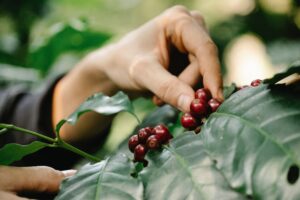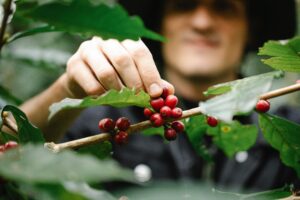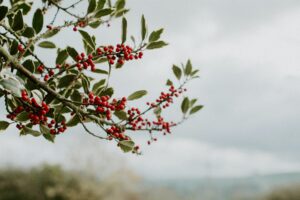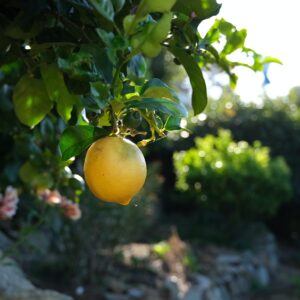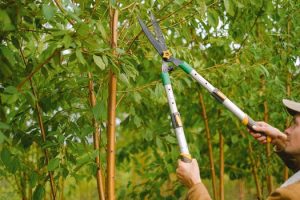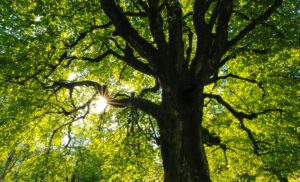How to Choose the Right Tree for your Property
HOW TO CHOOSE THE RIGHT TREE FOR YOUR PROPERTY
Selecting the right tree for your property is a decision that requires careful consideration of various factors to ensure the tree’s health, aesthetics, and compatibility with your landscape. Here’s a step-by-step guide to help you choose the perfect tree for your property:
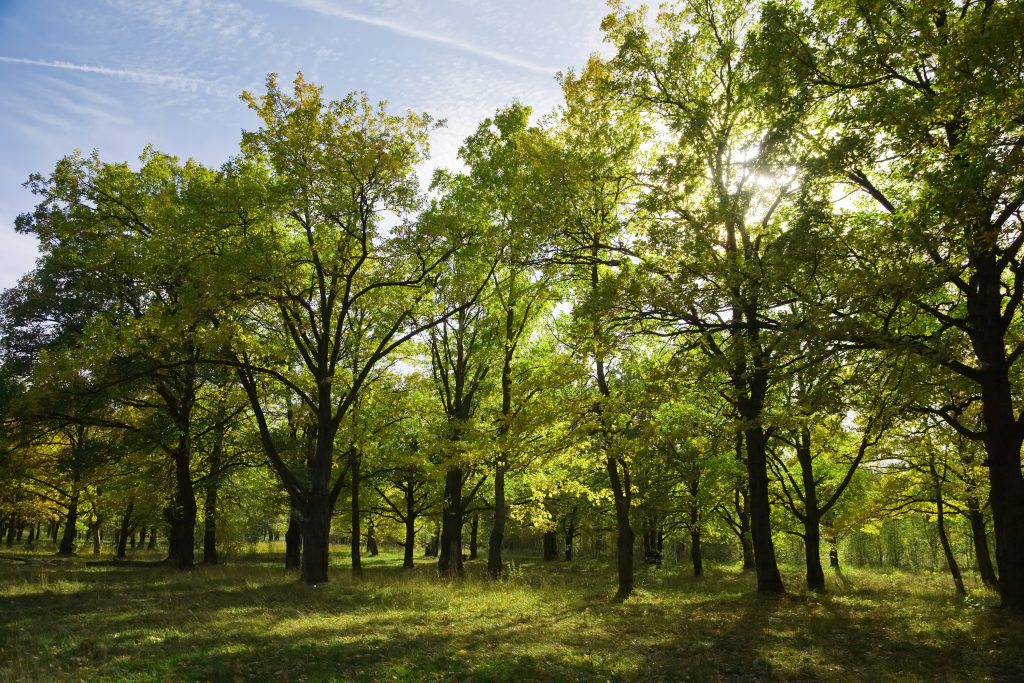
1. Assess Your Property:
• Evaluate the available space, including height and width restrictions.
• Determine the amount of sunlight the area receives throughout the day.
• Consider the soil type, drainage, and moisture levels in the planting location.
2. Define Your Goals:
• Identify the purpose of planting the tree: shade, privacy, aesthetics, wildlife habitat, or a combination.
• Consider whether you want a tree with colorful flowers, attractive foliage, or seasonal changes.
3. Research Climate Compatibility:
• Determine your USDA hardiness zone and research trees that thrive in your specific climate.
• Choose trees that can tolerate temperature extremes and weather conditions common to your region.
4. Consider Tree Size and Growth Habit:
• Determine the mature height and spread of the tree. Ensure it fits within your available space.
• Choose a growth habit (upright, spreading, pyramidal) that complements your landscape design.
5. Evaluate Soil Conditions:
• Conduct a soil test to assess pH and nutrient levels. Choose a tree species that suits your soil type.
• Ensure proper drainage to prevent waterlogging, which can harm tree roots.
6. Understand Sunlight Requirements:
• Match the tree’s sunlight needs (full sun, partial shade, shade) with the available light on your property.
• Consider nearby structures that might cast shade as the tree grows.
7. Determine Water Needs:
• Research the water requirements of potential tree species. Choose trees that match your property’s water availability.
• Consider drought-tolerant species if you’re in an area with water restrictions.
8. Account for Maintenance:
• Evaluate your ability to provide ongoing care, such as pruning, fertilization, and pest management.
• Choose a tree that aligns with your maintenance capacity.
9. Research Local Pests and Diseases:
• Identify common pests and diseases in your area. Opt for tree species resistant to prevalent issues.
• This reduces the need for pesticide use and maintenance.
10. Consider Wildlife and Ecological Benefits:
-Choose trees that provide food and habitat for local birds, insects, and wildlife.
– Trees that support the ecosystem can enhance biodiversity in your area.
11. Aesthetics and Design:
– Select a tree that complements your landscape design, considering factors like color, shape, and texture.
– Visualize how the tree will fit into your overall outdoor space.
12. Account for Longevity:
– Research the average lifespan of the tree species you’re considering.
– Choose a tree that aligns with your long-term goals for the property.
13. Check Availability and Regulations:
– Ensure the chosen tree species is available at local nurseries. – Check if there are any local regulations or restrictions on tree planting.
14. Budget Considerations:
– Estimate the costs of purchasing, planting, and maintaining the tree over its lifespan.
– Make choices that fit your budget while considering the tree’s value and benefits.
Choosing the right tree for your property is a significant investment that can enhance your landscape’s beauty and environmental impact. By considering these factors and conducting thorough research, you’ll be better equipped to make an informed decision that aligns with your goals and ensures a harmonious and healthy tree-landscape relationship.
Importance Of Selecting Suitable Trees For Property Aesthetics And Health
Selecting suitable trees for property aesthetics and health is of paramount importance for several compelling reasons:
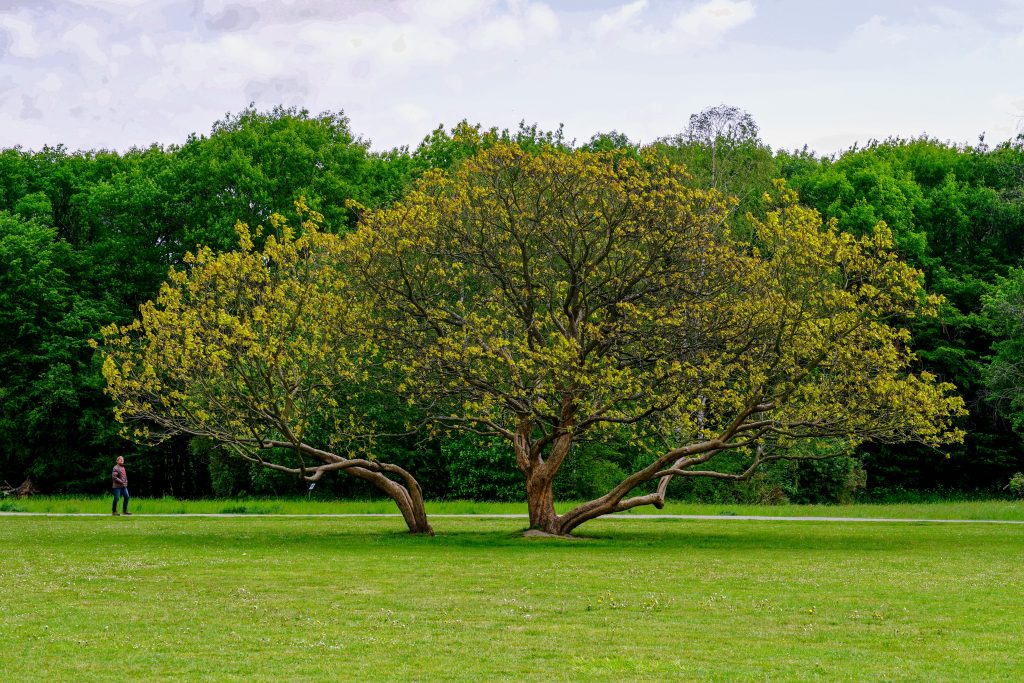
A beautiful shot of a growing tree in the middle of the park with trees on the background
1. Aesthetic Enhancement:
• Trees contribute to the visual appeal of your property, adding texture, color, and depth to the landscape.
• Well-chosen trees can create focal points, frame views, and enhance the overall beauty of outdoor spaces.
2. Landscape Harmony:
• Suitable trees blend seamlessly with the surrounding environment, creating a harmonious and balanced landscape design.
• Trees that complement the architecture and other elements on your property contribute to a unified and attractive aesthetic.
3. Increased Property Value:
• Thoughtfully chosen trees can significantly increase the value of your property.
• Mature trees are often considered desirable by homebuyers, who value the shade, privacy, and beauty they provide.
4. Shade and Energy Efficiency:
• Strategically planted trees provide shade, reducing the need for air conditioning during hot months.
• Shade trees can lower energy bills and create comfortable outdoor spaces for relaxation and gatherings.
5. Privacy and Screening:
• Taller trees can serve as natural privacy screens, shielding your property from neighboring views and noise.
• Carefully placed trees can create secluded areas within your property.
6. Erosion Control and Soil Stabilization:
• Trees with extensive root systems help prevent soil erosion by anchoring the soil and reducing runoff.
• They improve soil structure and prevent loss of valuable topsoil during heavy rains.
7. Wildlife Habitat:
• Suitable trees provide habitat and food sources for birds, insects, and other wildlife.
• Creating a diverse ecosystem on your property promotes biodiversity and contributes to local ecology.
8. Carbon Sequestration and Air Quality:
• Trees play a vital role in absorbing carbon dioxide and mitigating the effects of climate change.
• They release oxygen and improve air quality by filtering pollutants and particulates.
9. Reduced Urban Heat Island Effect:
• Urban areas tend to be warmer due to the heat island effect. Trees provide shade and cool the surrounding environment, creating a more comfortable living space.
10. Psychological and Health Benefits:
– Trees have been linked to psychological well-being and stress reduction.
– Having a green and lush environment contributes to a sense of tranquility and connection with nature.
11. Long-Term Investment:
– Selecting suitable trees and caring for them ensures long-term benefits. – Trees grow in value over time, enhancing your property’s aesthetics and contributing to a healthier environment.
In summary, choosing the right trees for property aesthetics and health goes beyond mere decoration. It involves considering the long-term impact on your property’s value, your comfort, and the environment. Thoughtful tree selection enhances the visual appeal, sustainability, and overall well-being of your property and the community.
Factors To Consider When Choosing Trees
Choosing the right trees for your property involves considering a variety of factors to ensure that the trees thrive, contribute positively to your landscape, and meet your specific goals. Here are the key factors to consider when selecting trees:
1. Climate Compatibility:
• Choose trees that are well-suited to your local climate, including temperature ranges, frost dates, and precipitation patterns.
• Research your USDA hardiness zone to determine which tree species are likely to thrive in your area.
2. Site Conditions:
• Evaluate the conditions of your planting site, including sunlight exposure, soil type, drainage, and available space.
• Consider whether the location receives full sun, partial shade, or full shade throughout the day.
3. Purpose of Planting:
• Determine the main reason for planting the tree. Is it for shade, privacy, ornamental value, windbreak, fruit production, wildlife habitat, or erosion control?
4. Growth Characteristics:
• Research the mature size (height and spread) of the tree. Ensure it fits within your available space and won’t interfere with structures or utilities.
• Consider the growth rate of the tree. Some trees grow quickly, while others take years to reach maturity.
5. Soil Conditions:
• Conduct a soil test to understand the soil’s pH, nutrient levels, and drainage capabilities.
• Choose tree species that are adapted to your soil type. For instance, clay-loving trees may struggle in sandy soil.
6. Water Requirements:
• Determine the water needs of the tree species. Some trees are drought-tolerant, while others require consistent moisture.
• Match the tree’s water needs with your property’s water availability and irrigation capabilities.
7. Maintenance Level:
• Consider the amount of care the tree will require over its lifetime. Some trees demand regular pruning, fertilization, and pest management.
• Choose a tree that aligns with your willingness and ability to provide ongoing maintenance.
8. Pest and Disease Resistance:
• Research common pests and diseases that affect trees in your area.
• Opt for tree species that have good resistance to prevalent pests and diseases.
9. Wildlife Benefits:
• If you want to attract birds and other wildlife, choose trees that provide food sources (fruits, nuts, seeds) and habitat (nesting sites, shelter).
10. Aesthetics and Design:
– Consider the tree’s appearance, including its foliage color, shape, texture, and seasonal changes.
– Ensure the tree’s aesthetics complement your landscape design and overall property style.
11. Longevity and Lifespan:
– Research the average lifespan of the tree species you’re considering. Some trees live for decades, while others have shorter lifespans.
12. Local Regulations:
– Check if there are any local regulations, zoning ordinances, or homeowner association guidelines that impact tree planting on your property.
13. Availability and Source:
– Ensure that the chosen tree species is available from local nurseries or suppliers.
– Verify the tree’s health and quality before purchasing.
14. Budget Considerations:
– Factor in the costs of purchasing, planting, and maintaining the tree over its lifetime.
By carefully considering these factors, you can make an informed decision that results in healthy, attractive trees that thrive in your landscape for years to come.
About Murray, Utah
Murray is a city situated on the Wasatch Front in the core of Salt Lake Valley in the U.S. state of Utah. Named for territorial governor Eli Murray, it is the state's fourteenth largest city. According to the 2020 census, Murray had a population of 50,637. Murray shares borders with Taylorsville, Holladay, South Salt Lake and West Jordan, Utah. Once teeming with heavy industry, Murray's industrial sector now has little trace and has been replaced by major mercantile sectors. Known for its central location in Salt Lake County, Murray has been called the Hub of Salt Lake County. Unlike most of its neighboring communities, Murray operates its own police, fire, power, water, library, and parks and recreation departments and has its own school district. While maintaining many of its own services, Murray has one of the lowest city tax rates in the state.
Neighborhoods in Murray, Utah
Murray Oakes, Grant Park, Southwood Park, Murray Park, Murray Park Restrooms, Willow Pond Park, Neighborhood Veterinary Care
Things To Do in Murray, Utah
Bus Stops in Murray, Utah to Truco Services, Inc.
Bus Stop in Murray Central Station (Bay C) Murray, Utah to Truco Services, Inc.
Bus Stop in State St @ 4801 S Murray, Utah to Truco Services, Inc.
Bus Stop in Murray North Station Murray, Utah to Truco Services, Inc.
Bus Stop in State St @ 4949 S Murray, Utah to Truco Services, Inc.
Bus Stop in Murray Central Frontrunner/Trax Station Murray, Utah to Truco Services, Inc.
Bus Stop in Murray Blvd / Vine St (SB) Murray, Utah to Truco Services, Inc.
Bus Stop in State St @ 3925 S Murray, Utah to Truco Services, Inc.
Bus Stop in State St @ 4824 S Murray, Utah to Truco Services, Inc.
Bus Stop in State St @ 5223 S Murray, Utah to Truco Services, Inc.
Bus Stop in Murray Blvd / Allendale Dr (NB) Murray, Utah to Truco Services, Inc.
Bus Stop in Murray Blvd @ 5039 S Murray, Utah to Truco Services, Inc.
Bus Stop in State St @ 4721 S Murray, Utah to Truco Services, Inc.
Driving Directions in Murray, Utah to Truco Services, Inc.
Driving Directions from Woodruff Tree Trimming and Removal to 4640 Commerce Dr, Murray, UT 84107, USA
Driving Directions from Reliable Tree Care to 4640 Commerce Dr, Murray, UT 84107, USA
Driving Directions from Tree Pro-Tech to 4640 Commerce Dr, Murray, UT 84107, USA
Driving Directions from Prestige Tree And Landscape to 4640 Commerce Dr, Murray, UT 84107, USA
Driving Directions from Excellence Tree & Landscape to 4640 Commerce Dr, Murray, UT 84107, USA
Driving Directions from Amen Trees to 4640 Commerce Dr, Murray, UT 84107, USA
Driving Directions from Tim's Tree Care to 4640 Commerce Dr, Murray, UT 84107, USA
Driving Directions from Jordan Tree Service - Murray to 4640 Commerce Dr, Murray, UT 84107, USA
Driving Directions from Arbor Works to 4640 Commerce Dr, Murray, UT 84107, USA
Driving Directions from Diamond Tree Experts to 4640 Commerce Dr, Murray, UT 84107, USA
Driving Directions from Green Tree Arborist to 4640 Commerce Dr, Murray, UT 84107, USA
Driving Directions from TruCo Services to 4640 Commerce Dr, Murray, UT 84107, USA
Reviews for Truco Services, Inc. Murray, Utah
Emily Abercrombie
We had a great experience with TruCo! They were well priced, responsive and prompt. Michael was a pleasure to work with and gave us advice on which plants to put in where we took out our ugly old shrubs. I would highly recommend this company!!!
Michelle Turpin
TruCo Services gets 5 stars from us for customer service. We experienced a few issues with their services this last year and Rob Eccles in senior management, stepped in and immediately handled our issues. He was very committed to making sure they understood our expectations and would execute to make us happy.
Siobhan Billingsley
I work for a property management company and have the pleasure of working with Rob at a community in Sandy. He has been incredible to work with and always responds in a timely manner. He knows all the homeowners by name and address and is aware of all the "problem" areas when it comes to sprinklers. I never have to worry about following up with him because he always reaches out to provide me with an update. If you're looking to work with someone who takes pride in their job, is professional, and can solve the worst landscaping problems thrown your way, Rob is your guy. Thank you, Rob for all you do!
Jaime S.
We have used Truco at 2 of the complexes we manage, they have been great to work with. Good quality service, outstanding customer service with good communication. That's hard to find these days. I highly recommend them. Travis has been awesome to work with.
Jerusha Smart
We use TruCo for a majority of our properties and our home. While other landscaping companies we use come and go for various reasons like cost, communication issues, work performance, etc., TruCo is always consistent in price and work. Also, Rob is the best.
